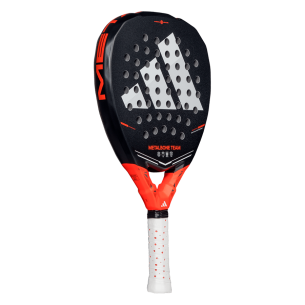
How to transition from attack and defense?
In other posts on this All for Padel blog, we have talked about the positioning on the court both in attack and defense.
This topic is fundamental, but we thought it appropriate to write an article focusing on a very important aspect - how to make transitions.
That is, how to move from the defense position to the attack or vice versa acting in the best possible way depending on the circumstances of the game.
Control the time and position for transitions
The transition zone goes from the end of the defense zone (service line) to approximately 3 meters before the net. This zone is basically a transition zone between the defense and the attack. Here we must stay as little time as possible, since we are not well positioned to perform a good defense or a good attack shot.
Commonly, in padel terms, it is usually called "the swampy zone" or "quicksand zone". It is important to remember these terms to keep in mind that we have to get out of this area as soon as possible.
Since we are not in a comfortable position, in this zone we will perform the so-called transition strokes. These are the ones that help us to move from one tactical phase to another during a point, that is to say, to make the transitions.
Normally to win the net when we come from the defensive position or to retreat after losing the net due to a good lob or a passing of the opponent.
In the approach shots to the net what we are looking for is to make the opponent uncomfortable without risking too much while we try to get to the right position on the court to continue with the point - either to win the net with a good position in attack or to recover a good defensive position if the opposite is the case.
Other important aspects for transitions
We should also comment on the case in which a transition situation occurs that we should not overlook and that happens when we go up to the net after serving. It is of vital importance, depending on our physical condition and our level of play, to confidently volley after serving.
A serve made with a lot of strength and speed arrives very fast to our rival’s racket and can cause the ball to come back to us quickly too. You will normally receive the return while being placed halfway down the court in a transition zone.
There are many possibilities to take the initiative in that scenario. Sometimes a well placed serve or with a good effect can give more advantage than a fast and powerful serve. Ther are many times when volleying in the "swampy zone" far away from the net that players end up losing the momentum from their own serve.
Summary and tips
As a summary and tips to perform transitions correctly, you should take following into account:
- Avoid playing in this zone as little as possible and get out of it as soon as the occasion allows.
- Do not take risks while you are in it and play simple strokes that can challenge the opponent.
- Constantly observe where you are playing permanently and correct your position.
- Use references the court gives us (glass, lampposts and especially posts of the wire mesh to help you to be well positioned). Mark the imaginary transition zone to stay in it as little as possible (mark it only as a passing zone, attack-defense transition or vice versa).
- Talk to your partner about the ideal placement on the court in case of doubt.
- If your physical condition leaves you no choice but to adapt to play in this zone, try to train well.
- Evaluate the speed and strength of your serve based on your fitness and technique. Determine if it is adequate or should you choose to slow it down.
-
That's all for today, padel friends. Keep an eye for more posts on our blog on how to improve your game!












